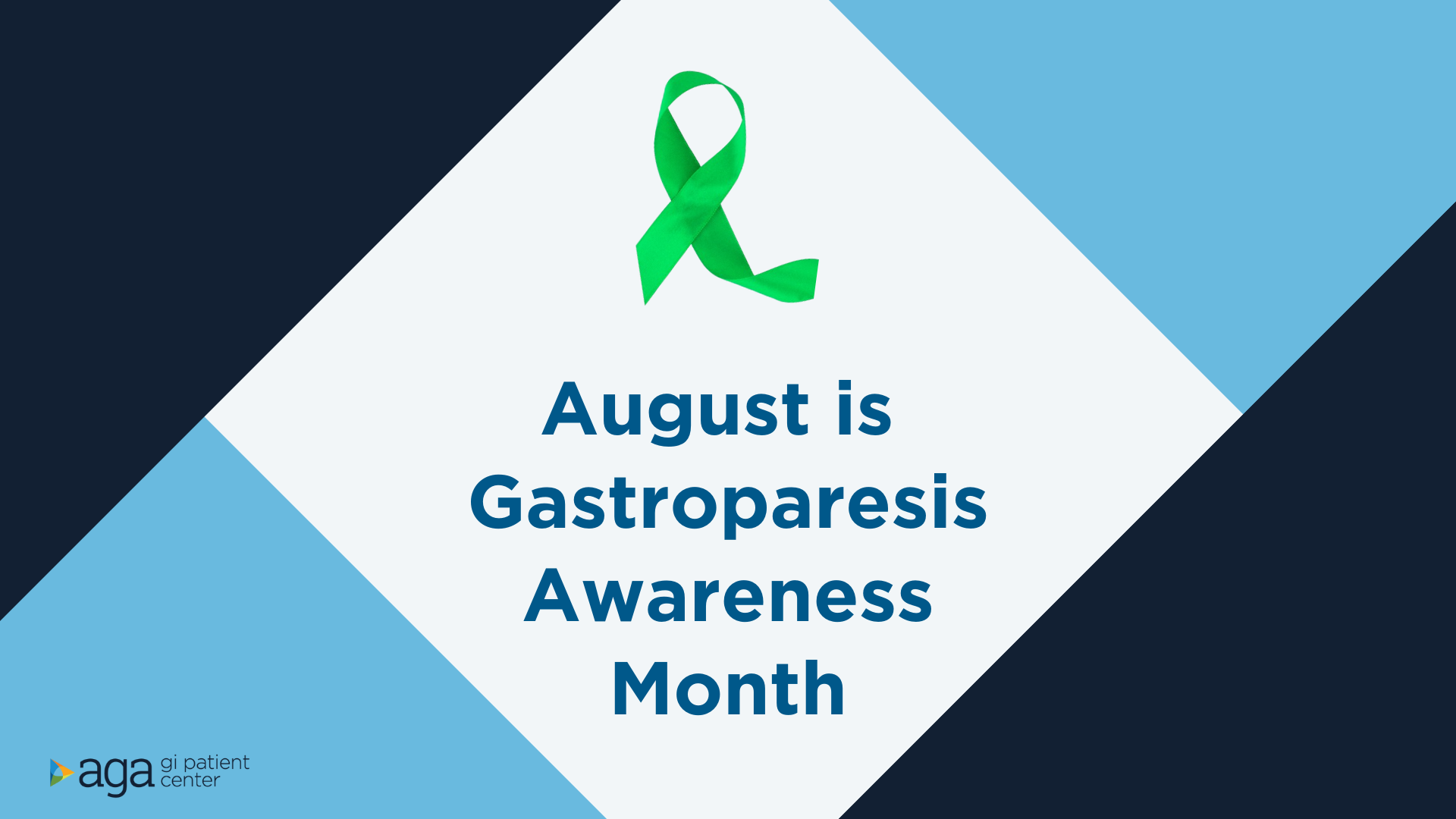August is Gastroparesis Awareness Month and this month we’re joining the GI community to raise awareness and share resources to help individuals manage this chronic condition.
Patients experiencing gastroparesis – or delayed gastric emptying – encounter uncomfortable symptoms since the stomach slows or stops the movement of food from the stomach to the small intestine.
Individuals with gastroparesis should examine their dietary habits and identify foods that work the best to feel healthy. Certain foods that take longer to digest, including foods high in fiber content like fresh fruits and vegetables, can make symptoms worse.
The AGA GI Patient Center outlines tips to prepare and use fruits and vegetables to receive nutrients while minimizing discomfort for individuals with gastroparesis.
- Peel fresh fruits and vegetables with thick skins to reduce fiber.
- Try canned fruits in natural juices or water. These are also peeled and will be softer in texture.
- Steam peeled vegetables until fork-tender to soften fiber.
- Make mashed or pureed vegetables by steaming, adding broth and then blending.
- Try fruit and vegetable smoothies.
- Try fruit and veggie pouches for convenience on the go.
- Choose 100% fruit and vegetable juices. Avoid juices with added sugar and high fructose corn syrup.
- Use fruit and vegetables in baked goods. Substitute applesauce for oil in baking.
- Add peeled and shredded zucchini or shredded carrots in muffins and breads.
This content was created in partnership with Dietitians in Gluten and Gastrointestinal Disorders (DIGID), a subgroup within the Dietitians in Medical Nutrition Therapy of The Academy of Nutrition and Dietetics.












